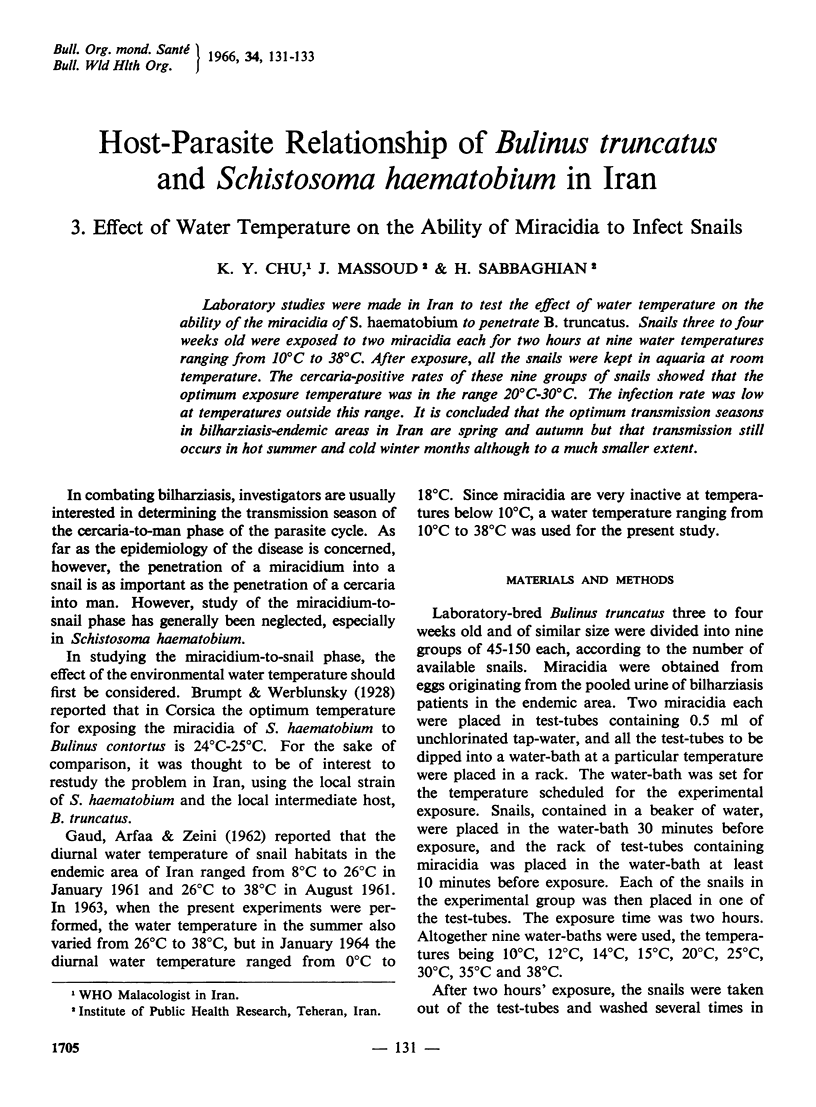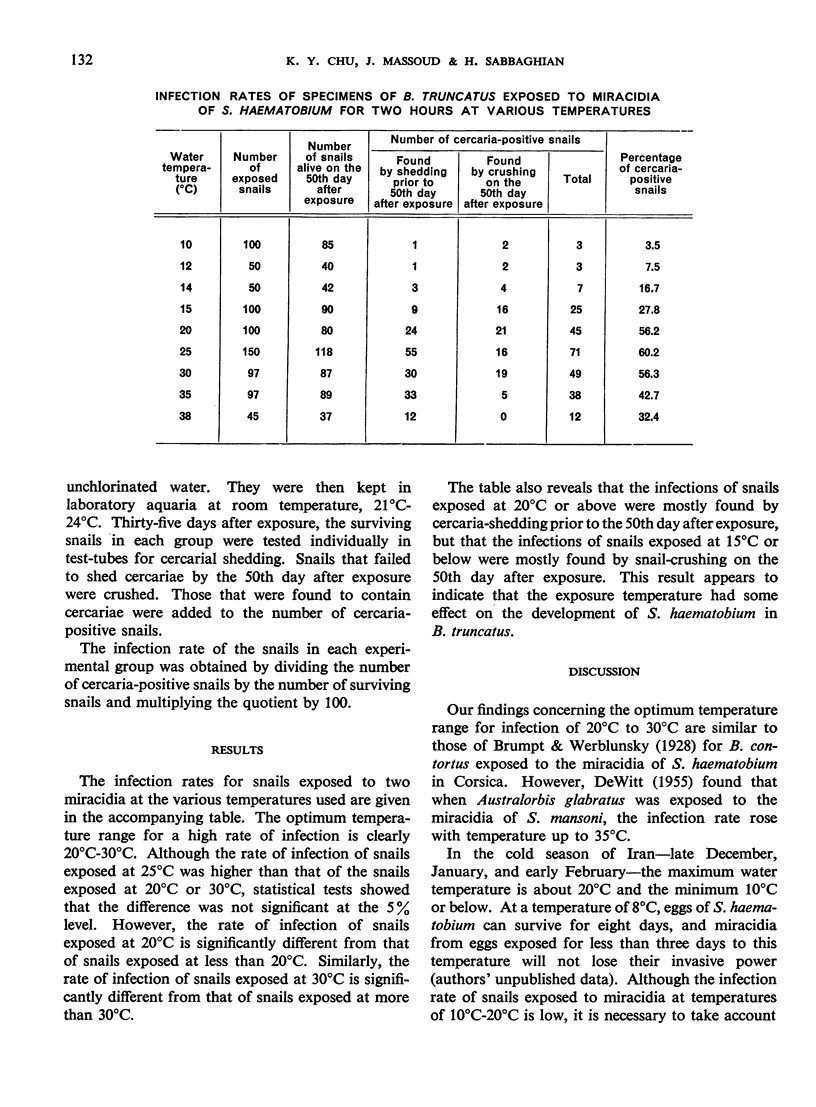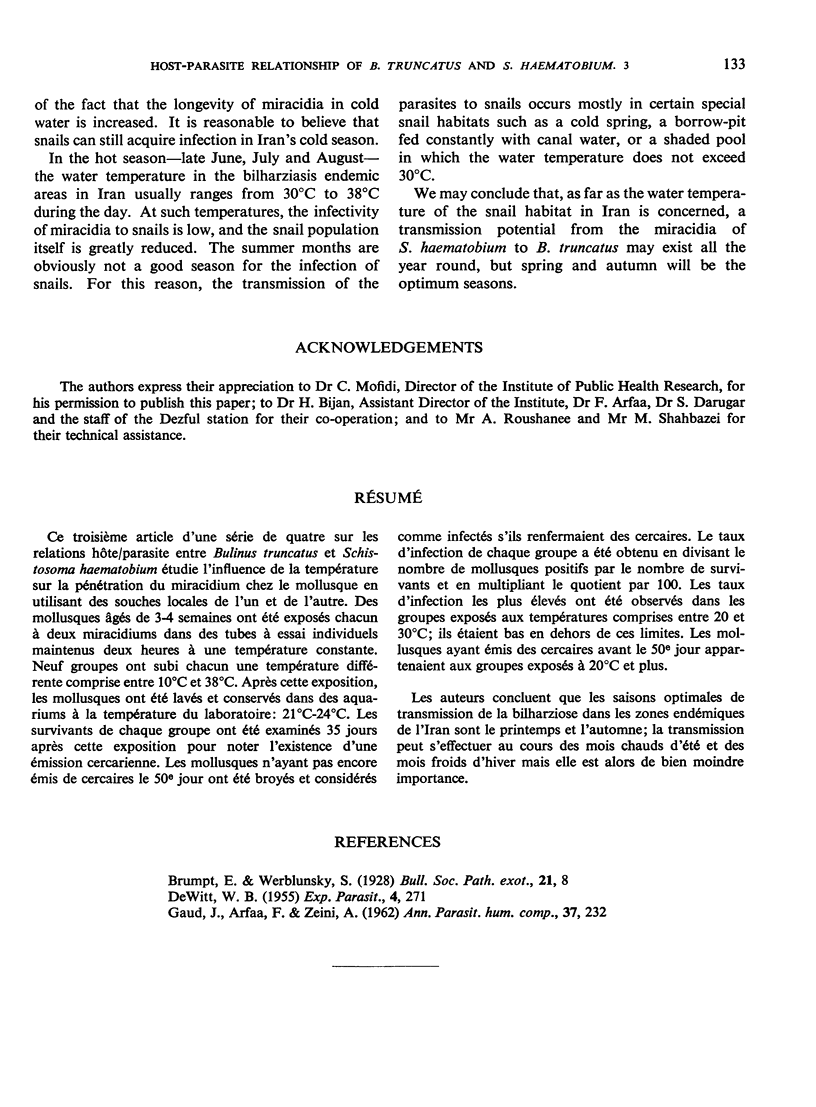Abstract
Laboratory studies were made in Iran to test the effect of water temperature on the ability of the miracidia of S. haematobium to penetrate B. truncatus. Snails three to four weeks old were exposed to two miracidia each for two hours at nine water temperatures ranging from 10°C to 38°C. After exposure, all the snails were kept in aquaria at room temperature. The cercaria-positive rates of these nine groups of snails showed that the optimum exposure temperature was in the range 20°C-30°C. The infection rate was low at temperatures outside this range. It is concluded that the optimum transmission seasons in bilharziasis-endemic areas in Iran are spring and autumn but that transmission still occurs in hot summer and cold winter months although to a much smaller extent.
Full text
PDF


Selected References
These references are in PubMed. This may not be the complete list of references from this article.
- DEWITT W. B. Influence of temperature on penetration of snail hosts by Schistosoma mansoni Miracidia. Exp Parasitol. 1955 May;4(3):271–276. doi: 10.1016/0014-4894(55)90030-8. [DOI] [PubMed] [Google Scholar]
- GAUD J., ARFAA F., ZEINI A. [Observations on the biology of Bulinus truncatus in Khouzistan (Iran)]. Ann Parasitol Hum Comp. 1962 Apr-Jun;37:232–275. doi: 10.1051/parasite/1962373232. [DOI] [PubMed] [Google Scholar]


